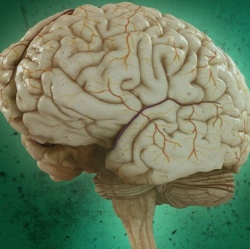
For a long time, scientists thought that everyone processed numbers predominantly in a spatial way (low to high numbers visualized as left to right).
More recently, several studies have shown associations between numbers and non-spatial representations of magnitude, such as physical size, grip opening, object graspability, tactile sensation, force (against a button, for example), and luminosity.
Gray-matter volume differences
A study by Florian Krause from the Donders Institute in Radboud University Nijmegen in the Netherlands, just published in the Journal of Cognitive Neuroscience, has now found that these individual differences are related to specific brain structures.
In MRI scans of test subjects, he discovered differences in gray-matter volume in two specific locations:
Spatially oriented brains have an above-average grey matter volume in the right precuneus, a small area of the brain associated with processing visual-spatial information.
Non-spatially oriented brains have more grey matter in the left angular gyrus, an area associated with semantic and conceptual processing.
The thirty people taking part in the study were put into an MRI scanner and were shown numbers between 1 and 9 (except 5). In two consecutive judgement tasks, they had to classify the presented digits as odd or even. Both tasks differed only in the required response: in the spatial task, subjects had to click with their index finger or middle finger to classify the digits (that is left or right position), and in the non-spatial task they applied either a small or a large force on a pressure sensor with their thumb.
Importantly, participants coupled the spatial response as well as the force response to the size of the presented number, as they responded faster with a left or soft press for small numbers and with a right or hard press for large numbers. Krause worked out those couplings for each subject, and compared the scores with the information from their brain scan.
